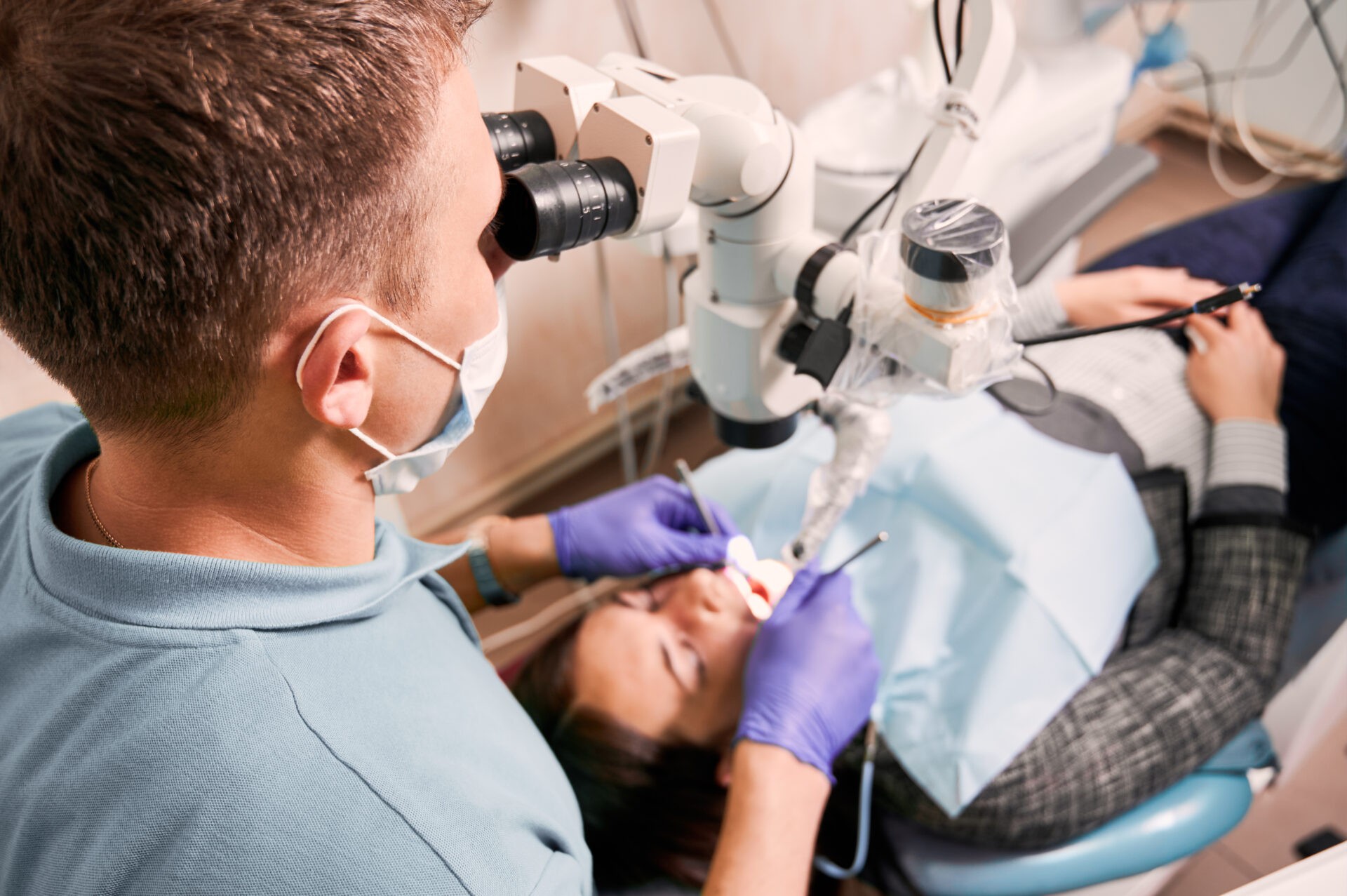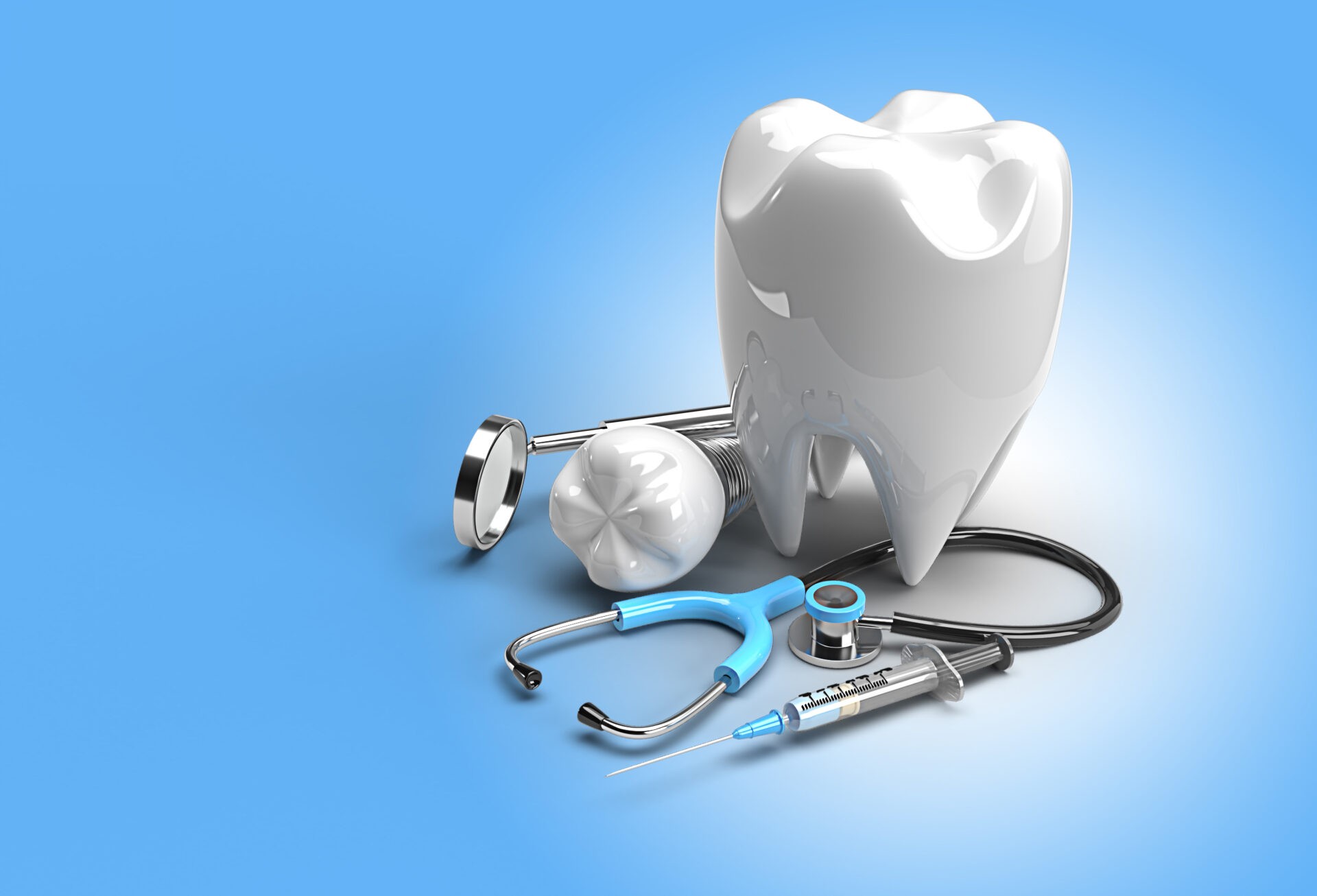What is Sedation, to whom and why is it shown?

21.10.2023
author: Olena Berezhna
Everyone probably has at least one friend who is afraid of dentists. Or maybe it’s you? Or your child? In this case, dental treatment is simply impossible without anaesthesia, but this word scares parents and children so much that many prefer to endure to the last. So we decided to find out what sedation is, what types of sedation there are, and who needs it.
We talked to Olena Berezhna, the head physician of Professor’s Dentistry in Poltava, who expertly explained all the nuances of anaesthesia for adults and children.
What is Sedation?
The term ‘sedation’ is often misused in the mass media. Usually, it means anaesthesia or general anaesthesia – the term general anaesthesia is not used to avoid scaring parents. However, from a medical point of view, sedation is a state of general calmness or light half-sleep of the patient by inhaling a mixture of special gases through a mask. The person calms down a bit, but is awake, in contact with the doctor, hears the questions asked, can fulfil some requests, but the feeling of fear decreases.
The so-called medication sleep, as anaesthesia is also often called to evoke more pleasant emotions and associations in people, is actually general anaesthesia. This is a condition when, under the influence of special medications, loss of consciousness and pain occurs during the period of their administration.
What types of anesthesia are there?
Two types of anaesthesia are used in dentistry:
- Inhalation. For short-term action, a mask is used. If this type of anaesthesia involves long-term treatment, the patient must be intubated — a special tube is inserted into the airway to protect it, and inhalation is delivered directly to the lungs;s served directly to the lungs;
- intravenous, when all drugs are injected directly into the bloodstream.
Mostly, these types of anaesthesia are combined with each other. For example, a child falls asleep under a mask, after which a catheter is inserted, medications are administered, and all manipulations are performed.
We try to make it more pleasant for the child. We turn on a cartoon while the child is in the room with her parents. Then they are given a mask to breathe into. As a rule, children understand what it is, because they have already had inhalations at home. For a child, this is the last thing he or she will remember. They won’t remember any other manipulations, — explains Olena Berezhna.
According to her, the dentist cannot perform such manipulations alone, so the anaesthetist is the main person in this process. It is the anaesthetist who monitors all the body’s parameters, places a catheter, administers painkillers and anti-allergic drugs, and performs intubation to protect the airways.
Who needs sedation?
There is a list of the most common indications for dental treatment under pain:
- treatment of children under three years of age, who are not yet able to sit in a chair after age;
- treatment of children with autism, cerebral palsy or other developmental features;
- irresistible fear of the procedure in children or adults;
- the presence of allergic reactions to local anesthetics or other medicines;
- A large volume of treatment and desire to make the process more comfortable.
According to Olena Berezhna, the clinic is most often visited by children with a large amount of treatment. For example, a child is two years old and cannot concentrate for a long time, but he or she has already lost four or five teeth. It is often simply unrealistic to treat this many teeth in a small child, because it is a long and rather unpleasant manipulation. The child simply cannot sit with his or her mouth open for so long. Therefore, the main thing here is that the child does not suffer psychological trauma after visiting the dentist.
Even if the child reacts normally to the dentist and can sit in the chair for a while, it is not recommended to divide the treatment into five or six appointments for children. There is such a thing as dental fatigue – after the second or third visit, a child may simply refuse to go to the clinic.
“Now many parents who lead their children to such manipulation then ask: ? Can we and we are so helpful? Since Soviet times, they have had a fear of dentists. Adults often turn out who have had negative experiences in the past. Here we usually have a situation where they endure to the last because of fear, and then come through unbearable pain and are still afraid,” says Mrs. Olena.
Anaesthesia is also used to treat children with autism, cerebral palsy or other developmental disabilities who, due to their physical characteristics, cannot concentrate, hold their heads, control their movements, etc. After all, during dental manipulations, various instruments are found in the oral cavity that can injure the child.
How to choose?
In the clinic in which anaesthesia is treated, there should be all conditions to reduce the time of the procedure as much as possible: coordinated work of the team, all the necessary tools are prepared, each doctor should understand the algorithm of work.
According to Mrs. Olena, there is no scientific and evidence base that would regulate the time of a preschool child under anaesthesia. But there is a recommended time – no more than three or three and a half hours. For adults, this can be more, depending on the amount of work.
The type of anaesthesia is chosen by the anaesthetist depending on the type of procedure. If it is a short-term procedure, such as tooth extraction, inhalation may be sufficient. If a longer treatment is planned, then intubation will definitely be required, as it protects the patient and ensures the safety of the treatment.
In the following materials, together with experts and dentists, we will consider in more detail how all processes occur and how parents and just adult patients choose the clinic they are going to contact to make sure that the procedure is definitely safe and in compliance with all professional treatment protocols.

